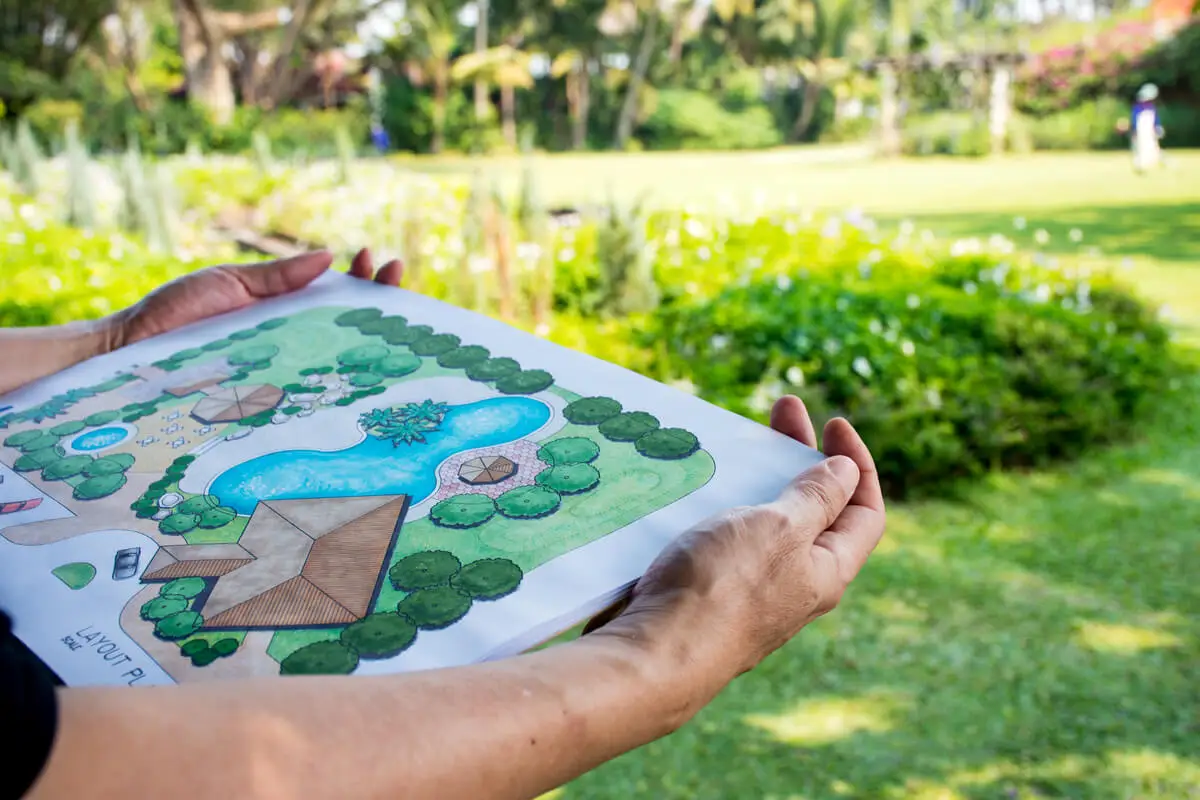5 Ideas to Create a Sensory Garden

A sensory garden is a space designed for the delight of the senses, which seeks to create a relaxing experience through things that convey well-being. In this way, sensory gardens contribute to the physical and mental health of those who enjoy them.
In this article, we’ll show you several options to create a sensory garden that stimulates all your senses and allows you to have an oasis of rest.
Surely, we’ve all experienced a relaxing feeling in an encounter with nature at some time. In fact, nature is an ideal space for meditation and contemplation, and even for intellectual production.
Therefore, it’s not strange to find references to how gardens have been places of inspiration for artists and poets. Fortunately, having something like this in your home isn’t a pipe dream. You just have to take advantage of your space and implement the best ideas to have a sensory garden.
A brief history of sensory gardens
Since ancient times, various civilizations have given a special place to gardens, both in public and private spaces. In fact, throughout history, multiple styles and forms have been developed to design these places, which are heavily influenced by culture.
Hence, there are well-known references to famous gardens, such as the hanging gardens of Babylon, Versailles, the Alhambra, and the Japanese gardens, to name a few examples.
Sensory gardens are spaces created to stimulate the senses and provide pleasure. Although they don’t necessarily respond to a specific style, traits of this intentionality can be found in Zen gardens or in Mediterranean gardens.
A publication of the University of Seville entitled The senses in the Mediterranean garden: sight and perception of shapes explains how the Mediterranean garden is characterized by a design and integration of elements that have an important sensory charge. This sensory component stands out above all in the visual aspect.

We think you may also enjoy reading this article: How to Use Neem Oil to Look After Your Garden Plants
The best ideas to create your sensory garden
A sensory garden should be designed to delight the sight, smell, taste, touch, and hearing. The elements that are configured around it must fulfill some of these functions to get the most out of it.
The large sensory gardens, such as those found in palaces and temples, are quite a spectacle. When you see them, it often seems impossible to have one at home.
However, this is a mistaken belief. You should think strategically and take advantage of every corner!
1. Surround your sensory garden with beauty
To delight the sense of sight, it’s essential to have multiple colors and shapes. However, this is not at all difficult in a garden, as the colorful and natural beauty of flowers is the best starting point.
You should consider factors such as the variety of colors you want to have, the blooming cycles, and the care needs of each flower. This way, you can create different design blocks.
Remember to mix flowers that have similar characteristics, as they will share the same location. Also, choose colors that complement each other well. The chromatic color wheel can be a great help to achieve the goal.
In addition, you can have terracotta or handmade pots, which contribute their own unique look to the space. The important thing is to achieve harmony.
Choose showy flowers of your choice. If they’re plants that bear fruit, so much the better!
On the other hand, the design of the garden and the location of the elements is also a fundamental part of its beauty. Depending on the shape, try to create figures and blocks that are pleasant, such as tracing a path. If you have a large space, you can also consider an arch with vines. Also, plants with long foliage that have movement help to create pleasing effects to the eye.
2. Plant flavors
To delight the taste buds, one of the ideas is that the sensory garden also provides flavors. For this reason, you should have a space dedicated to the garden, with products that are also beautiful.
You can plant strawberries, tomatoes, blueberries, have a lemon or a cherry tree. Choose plants that suit the size and your climatic conditions.
You can plant aromatic plants. Citronella, lavender, basil, rosemary, parsley, cilantro, mint or mint are excellent choices. Plus, you’ll have food ready to go from garden to table.
3. Fill your sensory garden with great smells
Plant smells are fundamental among the ideas for a sensory garden. Fortunately, this isn’t a difficult task.
It’s enough to plant aromatic plants, roses, jasmine, or any plant that gives off a pleasant smell. Make sure that these scents are not all together, however, because it will be difficult to appreciate them individually this way.
4. Mix textures for a sensory garden
The variety of textures is fundamental for a sensory garden. Not only should you have plants that generate different sensations when you touch them, but having grass where you can walk barefoot is ideal.
You can also have areas with smooth stones or sand you can touch. If you have a pond, putting your feet or hands in it on a hot day will generate a delightful sensation.
On the other hand, you can add other elements, such as a hammock, a comfortable chair, or a blanket that allow you to sit and enjoy the place and feel the pleasant sensations of the garden throughout your body.
5. Generate pleasant sounds
Sounds are important in a garden. Although this is a sense that we usually don’t think of at first when entering a green space, it plays a key role.
With a fountain, the sound of water will be relaxing. However, you can also put bird feeders that allow you to listen to the birds singing.
If you have a large space, having trees that russtle in the wind will generate a very pleasant sound.

Plan before creating your garden
One of the most common mistakes when creating a garden is to start planting flowers and moving elements without having a specific plan. The result can be a cluttered space without much grace.
For this reason, before you start planting and placing elements in your garden, you should take into account the space you have and make a simple plan.
Then, imagine the place and what elements you would like to include. To help you in the process, look for inspiration in other types of gardens and take note of the ideas. However, the most important thing is that you like it and that it generates pleasant sensations.
Like this article? You may also like to read: The Best Trees and Shrubs for Privacy in the Garden
Enjoy the benefits of your garden!
According to landscape agronomist Monique Briones, landscaped outdoor spaces can be spiritually and emotionally beneficial. In fact, they are increasingly used in hospitals and rehabilitation centers. In this regard, there is plenty of evidence of therapeutic landscaping today.
Now that you know how to create a sensory garden in your home, no matter how large or small the space, it’s time to take advantage of all its benefits. Finally, remember that it’s not enough just to design; maintenance is also key.
All cited sources were thoroughly reviewed by our team to ensure their quality, reliability, currency, and validity. The bibliography of this article was considered reliable and of academic or scientific accuracy.
- Briones, M. (s/f). JARDINES TERAPÉUTICO HEALING GARDENS S. Jardines con alma. https://jardinesconalma.com/2010/11/jardines-terapeuticos-healing-gardens.html
- Díaz, G. (2017). Los Sentidos en el Jardín Mediterráneo: La Vista y la Percepción de las Formas. Universidad de Sevilla. https://idus.us.es/xmlui/bitstream/handle/11441/57371/TFG_Guillermo%20Diaz%20Oliver_Los%20Sentidos%20en%20el%20Jard%C3%ADn%20Mediterr%C3%A1neo.%20La%20Vista%20y%20la%20Percepci%C3%B3n%20de%20las%20Formas.pdf?sequence=2
This text is provided for informational purposes only and does not replace consultation with a professional. If in doubt, consult your specialist.








